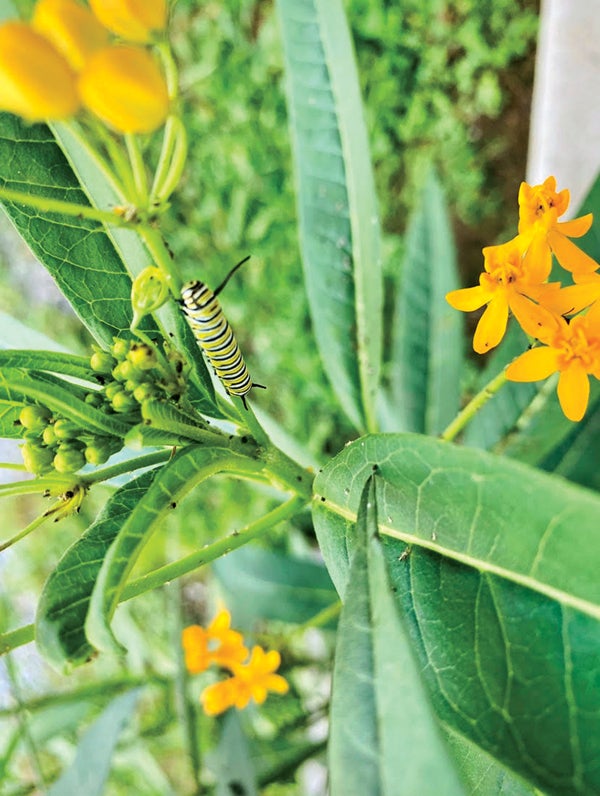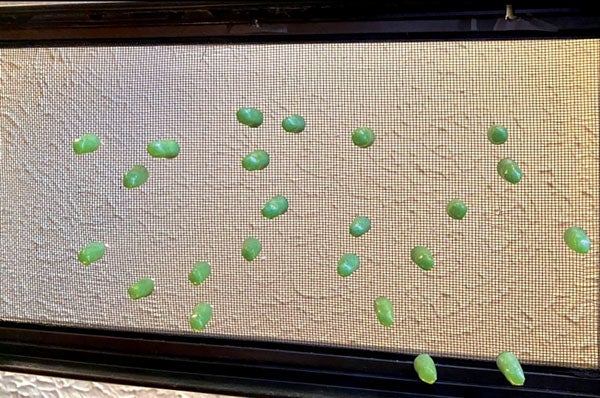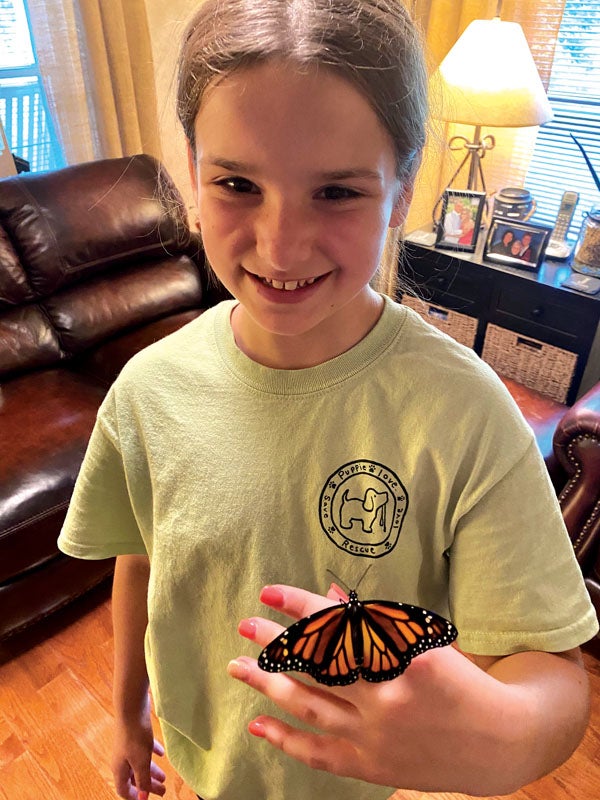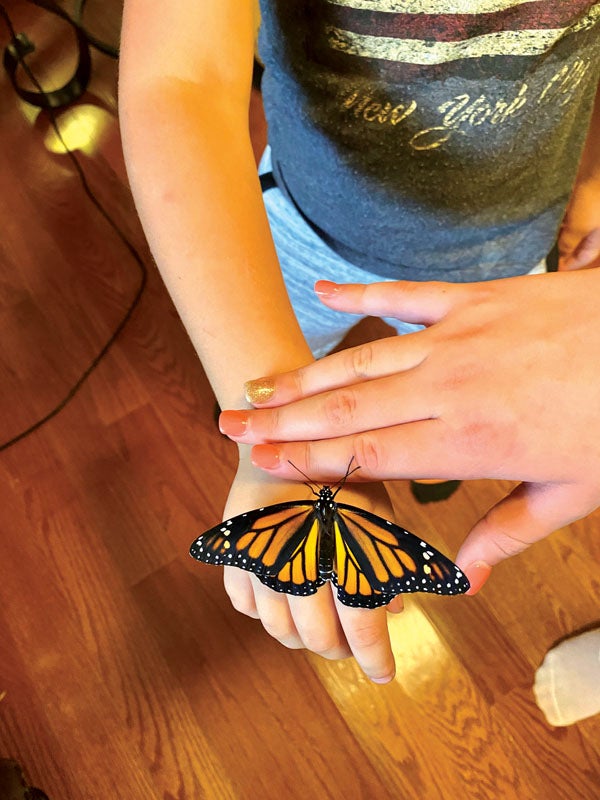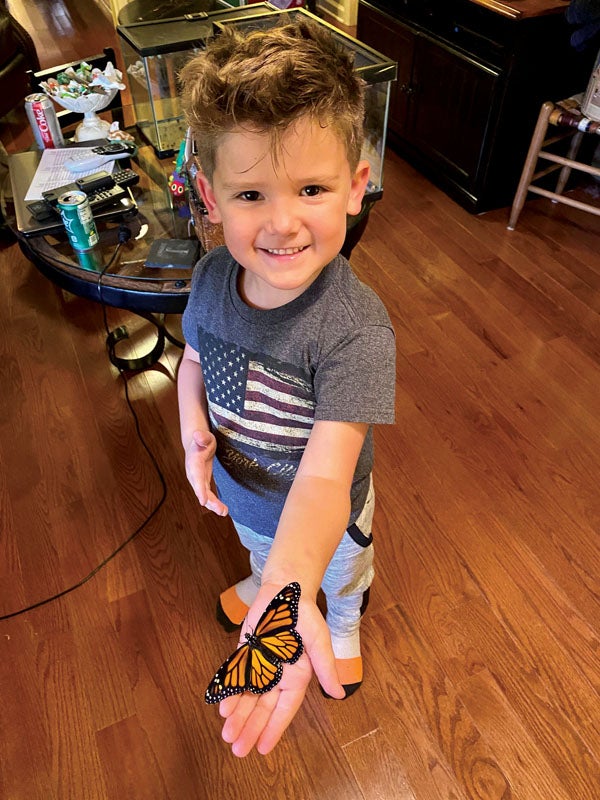Raising Monarch butterflies a fall ritual at Johnson home
Published 1:13 pm Friday, September 18, 2020
1 of 6
|
Getting your Trinity Audio player ready...
|
What is more beautiful than a butterfly as it flits (or dances) from flower to flower in the summer, sipping nectar along the way?
Josie and Hayden Johnson and their grandmother, Patsy Johnson, think that even lovelier is the almost magical metamorphosis of an egg into a Monarch butterfly, witnessed firsthand. “There’s nothing more beautiful than watching a little old ugly caterpillar turn into something as beautiful as a butterfly,” said Patsy, who has been raising butterflies every fall since 2012.
She was introduced to raising butterflies by her husband’s cousin, Linda Moore, who had been doing it for years. “At the time, Josie, our first grandchild, was small and I wanted to do it for her. Linda gave me a caterpillar and I went out looking for some milkweed. I found my first milkweed in a ditch up along the Long Hollow Road, and for a few years after that we would go milkweed hunting in the fall – that is until Josie walked upon a snake. That’s when I decided we would raise our own milkweed,” Patsy shared.
This year she raised tropical milkweed from seed for the butterflies to lay their eggs on. “The tropical variety grows like crazy, so I think next year I will stick to Tennessee milkweed,” Patsy said.
Earlier this week, she had 61 chrysalis. “If they all hatch, we’ll have 61 butterflies,” she said, much like a grandmother anxiously awaiting the birth of grandchildren. “It’s just something magical about it.”
Raising Monarch butterflies starts with an egg smaller than the head of a pin. The butterfly will flit from one milkweed leaf to another, pausing long enough to deposit one perfect egg under the leaf. That small egg over time emerges into a caterpillar, translucent at first, but soon striped in its familiar yellow, black, and white.
Patsy noted that it requires work to raise butterflies. “As soon as the caterpillar emerges, the caring increases. They are hungry little critters, needing lots of milkweed to grow to maturity. They eat a lot and poop a a lot, which means feeding them and cleaning their poop is a never-ending job for days,” Patsy said with happy laughter. When the caterpillars are very small, she transfers them to a terrarium with a screened top. This year, she has two terrariums to handle the 61 chrysalis and the milkweed that sustains the caterpillars.
“It is a lot of work, but it’s fun, and a project the whole family can enjoy. The terrariums have to be cleaned daily and disinfected,” Patsy shared.
She noted that it usually takes about two weeks from the time the caterpillar hatches from the egg until it is ready to pupate. “They (the caterpillar) usually are about two inches long when they are ready to form their chrysalis. When they are young, they are quite delicate, but as they grow, it becomes safer to handle them,” the seasoned caterpillar grower shared.
Patsy explained that when the caterpillar gets ready to pupate, it will spin silk, attach itself to the screened top of the terrarium and hang head down in a “J” shape. “It will stay like that for about 24 hours before its final molt, when it will straighten some and the pupa will emerge. It then changes into the beautiful jade chrysalis that the Monarch is so well known for. It is truly a work of art,” she shared.
Patsy gets excited talking about the Monarch, almost as excited as when the first one is born. After the chrysalis is formed, it takes another one to two weeks before the butterfly is ready to emerge. When the Monarch butterfly does emerge, it usually takes it several hours to prepare for its first flight. “When it gets close to being ready, it will start to flutter its wings some. If you want to allow your butterfly to crawl up on your fingers this is a great time to do it,” Patsy said.
“She spreads her wings tentatively at first, holding them open to the sun and folding them again. After a few minutes, she’s off, ruffled by the breeze, searching for nectar and a mate…Soon she will migrate to Mexico for the winter,” Patsy shared, knowing that her newfound butterfly family will soon fly away. She will put the terrariums away, and wait until next year to begin the cycle over.
Patsy shared that you can tell if a butterfly is male or female by looking at its open wings. Male Monarchs have small black dots on their hindwing. Females do not.
Hopefully, next year when some of the Monarch butterflies return from winter migration, the world will be different than what it has been this year…the little girl and boy searching with their grandmother for caterpillars will be changing and growing, as well. And yet, the opportunity will return to find peace and excitement in narrowing their focus to one single miracle unfolding before their eyes. It’s a miracle of hope and transformation, and one that brings them close to nature and to each other.


